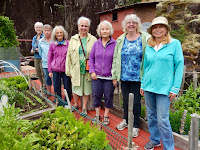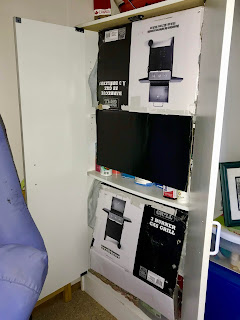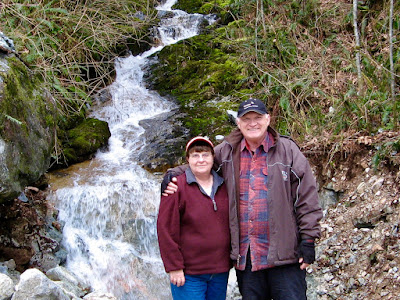2018 Gardening in Review
I enjoyed a long season of gardening again this year.
 |
| My floating garden on Powell Lake, BC. |
Here's a review of my gardening posts from 2018. Click the titles to read the complete posts.
January 2018 -- Winter Garden Wonders about my first year of trying an active winter garden using my floating garden raised beds and selected containers.
 February 2018 -- Pressure Canning Potatoes from my own crop grown in half 55-gallon barrels strategically placed around the float cabin deck.
February 2018 -- Pressure Canning Potatoes from my own crop grown in half 55-gallon barrels strategically placed around the float cabin deck.March 2018 -- Pressure Canning Carrots from the Scarlet Nantes I grow in my floating garden raised beds. They make a short, sweet stubby carrot perfect for eating, storing and canning.
March 2018 -- Repotting a Red Currant tells how I made a large container from a 45-gallon black barrel to transplant my two year old red current plant. The currants were so happy in their new home that they gave me plenty of fruit for jam.
May 2018 -- Float Cabin Living: Can You Have a Garden? -- This was a segment of my series about off-the-grid living in our float cabin home on Powell Lake, BC.
July 2018 -- Summer Garden Highlights shares some of my garden successes including a visit from members of the Powell River Garden Club.
August 2018 -- Overwintering Geraniums shares my most recent and most successful method of overwintering outdoor geraniums in a cool to cold climate. Right now they are enjoying indoor life in our Powell River condo.
 August 2018 -- Raising and Drying Herbs tells how I make my home grown herbs last throughout winter. For fun I hand painted recycled containers to liven up my spice shelf.
August 2018 -- Raising and Drying Herbs tells how I make my home grown herbs last throughout winter. For fun I hand painted recycled containers to liven up my spice shelf. October 2018 -- Harvesting and Storing Potatoes shares how I grow potatoes in containers on my cabin deck. I save my own seed potatoes, making it a very economical food to grow.
October 2018 -- Harvesting and Storing Potatoes shares how I grow potatoes in containers on my cabin deck. I save my own seed potatoes, making it a very economical food to grow.  November 2018 -- Guest Blogger on Terra do Milho -- I was invited by Monique, a homesteader in Portugal, to write a guest post for her blog. You can read more about Monique's experiences at her Terra do Milho website.
November 2018 -- Guest Blogger on Terra do Milho -- I was invited by Monique, a homesteader in Portugal, to write a guest post for her blog. You can read more about Monique's experiences at her Terra do Milho website. December 2018 -- Composting with Chop and Drop in the Garden and Containers describes how I am using a method called chop and drop to use garden waste as mulch and layered in empty containers to decompose over the winter months.
December 2018 -- Composting with Chop and Drop in the Garden and Containers describes how I am using a method called chop and drop to use garden waste as mulch and layered in empty containers to decompose over the winter months.How was your gardening this year? What were some of your successes and challenges you learned from. -- Margy


































































